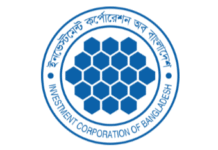Trying times for our RMG sector

These are very challenging times for the Bangladeshi ready-made garment (RMG) industry. Bangladesh Garment Manufacturers & Exporters Association (BGMEA) recently announced that since February this year, 46 RMG factories have closed down and 25,000 workers have lost their jobs.
It is also my understanding that many more RMG businesses are under great strain and, against the backdrop of a stagnant global economy, it would not be a surprise if we witness further casualties in our industry in the coming months.
Why are RMG factories struggling? There are many who suggest declining apparel prices and downward pressure on unit cost prices as some of the key challenges facing the factory owners. Without doubt, factory owners are operating in a very tough market in which buyers drive a very hard bargain on price. But this has always been the case, and this is how businesses operate everywhere in the global market—from Bangladesh to India, China to Vietnam.
High bank interest rates are also not helping matters. Lending rates to businesses in Bangladesh are high by international standards and have been edging upwards. The hope here is that banks and the industry can work more closely to find innovative ways to get finance on the table for ambitious, growing businesses with solid prospects.
However, there is another factor at play which demands attention. Consider, first of all, that Bangladesh’s RMG sector experienced 11.49 percent growth in the last fiscal year according to the latest government figures, which were published in July. Growth was nine percent in August. These are impressive figures and illustrate that the industry continues to remain robust.
But there appears to be a paradox here. On the one hand, export revenues are growing, which shows more orders are being placed. On the other, there is talk of factories struggling due to a lack of orders and, some could be in danger of closing production lines down. So, what’s happening?
The obvious answer is over-capacity. There is currently too much slack in the industry, which is not sustainable in the long run. Factory owners cannot afford to have machines and machinists continually lying idle; therefore, better long-term planning and operational management should be key priorities for the industry moving forwards. We need a lean, productive industry with little or no fat in order to be globally competitive.
Part of this issue relates to a lack of efficiency, particularly for smaller runs. More efficient management of small runs will help factory owners keep inventory levels down; it will also help brands in terms of less mark-downs.
There is also another related issue to consider. For too many years, our RMG factories have produced the same four or five basic staple products. With many factories producing the same or similar products, there is only one competing factor: the price. It is inevitable, then, that prices will continue to be driven downwards until they reach close to—or even below—cost for some factory owners. It is here that factories can easily run into trouble.
Factories need to diversify their product offerings, shifting into differentiated products such as lingerie and outerwear. They also need to consider how they can meet the requirements of brands for more sustainable products, including products which use recycled polyester, for instance.
Factories cannot continue to compete solely on price, for if they do so, they will limit their options and have to depend on fortune. Better, surely, to grasp the nettle on this issue and take their fate into their own hands. How? By innovating and adding value. Only a handful are doing this in our industry. Where is product development, the design and innovation studios within factories, research and development?
These days brands expect complete package from their suppliers. At present, many RMG factories in Bangladesh cannot provide it, which results in buying houses and intermediaries stepping in and dealing with the brands. This means factory owners lose out as middlemen cream off part of the profit from orders. Therefore, factories need to evolve and think about how they can provide the necessary elements—design, innovation and so on—so that they can deal directly with brands and retailers.
Another key potential differentiator is lead time. Physical distance from the key market of the US will always be a challenge but there are things Bangladesh can do to improve lead time. For instance, Bangladesh can develop better raw material supply chains to the RMG sector. Supply chain infrastructure of the RMG sector needs improvement so that in-demand fabrics—including sustainable, recycled materials—can more quickly be delivered to factories.
If factories are not prepared to do this, they risk missing out on orders and seeing their production lines lie idle. For too long, Bangladesh has competed solely on price, and this has led to a race to the bottom for factory owners.
It’s now time to let new entrants to the RMG market—African countries such as Ethiopia—take over the low-cost mantle, while Bangladesh evolves and shifts its focus to adding value. This would be the next logical step for the industry and the best way of remaining globally competitive long-term.
Mostafiz Uddin is the Managing Director of Denim Expert Limited. He is also the Founder and CEO of Bangladesh Denim Expo and Bangladesh Apparel Exchange (BAE). He can be reached at mostafiz@denimexpert.com.









